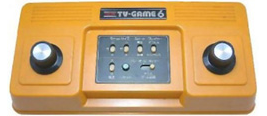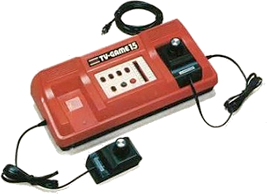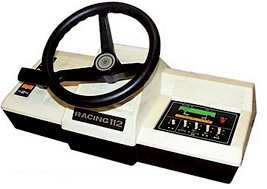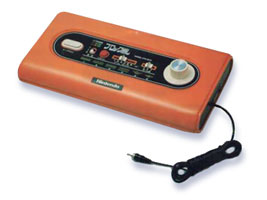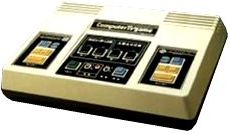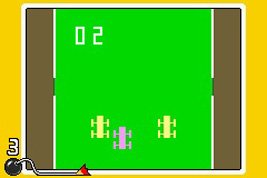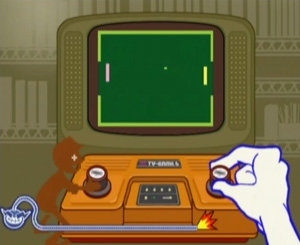Color TV-Game 6 (1977)
Nintendo's first home videogame system features three variations of 'Light Tennis' (a.k.a. Pong):
- Tennis features a dotted-line 'net' down the centre. Use the paddle to hit the ball over the net and past your opponent's paddle to score a point.
- Volleyball features a more complex net shape down the centre of the play area that causes the ball to bounce around.
- Hockey has no net, but much smaller goals, making it harder to score points.
Each game can be played in Singles or Doubles mode, for a total of six games. In Doubles, each player controls two paddles at the same time.
